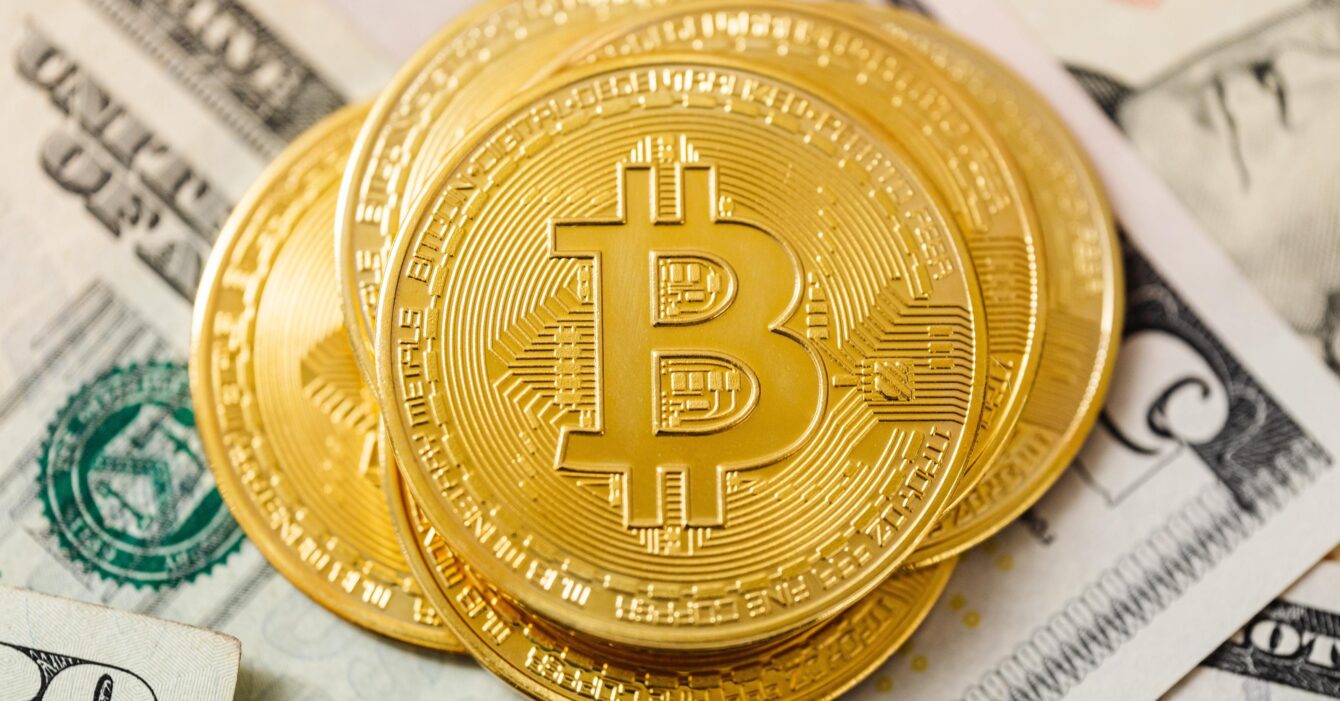Cryptocurrencies are gradually become a worldwide concern, with speculation that they may eventually replace fiat currencies. The adoption of cryptocurrencies continues to grow, leading in part to the world’s transition to a cashless environment.
The revelation that some individuals transact with cryptocurrencies supports the idea that cryptocurrencies may be the currency of the future. Still, given the significant pushback from authorities throughout the world, it will be some time before they make their way into the mainstream business.
Even though the world is moving toward a cashless future, relatively few people understand how cryptocurrencies differ from conventional money.
What Is the definition of Fiat Currency?
Fiat money is a type of currency that is issued by the government and regulated by a centralized body, such as a central bank. These currencies function as legal money and are not always backed by tangible commodities. It is instead built on the economy’s credit.
Fiat currencies, such as the US dollar, pound, or euro, and Ringgit Malaysia derive their value from market factors along with supply and demand. Since they’re not connected to any actual assets, such as commodities, such currencies are constantly at risk of becoming devalued because of hyperinflation.
Around 1000 AD, China was the first country to introduce fiat currency, which thereafter expanded around the world. Currency was once based on actual goods such as gold. Only in the twentieth century did President Richard Nixon put a halt to the conversion of the US currency into gold.
The Benefits of Fiat Money
In most countries, fiat money has remained legal currency due to its great stability and control. Fiat currencies, as opposed to cryptocurrencies and commodity-based currencies, are relatively constant. The economy’s stability empowers regulators and governments to steer it through recession and inflation.
Fiat money may also be used to store value and facilitate exchange because of its stability. It can also be used to give a monetary account. Greater control is essential for central banks to better regulate important economic factors like liquidity, interest rates, and credit availability, all of which are essential for a strong and stable economy.
Fiat Money’s Drawbacks
Even while fiat money is thought to be a stable currency, this isn’t always the type of scenario. Over the years, economic downturns have brought to light some of the flaws of Fiat money. Given its limitless supply, most people feel that gold may be a much more stable currency than a central bank’s stronger control at times accomplishes nothing to halt inflation or recession. The concept of central banks controlling the economy, as well as the continuous rise in global prices, necessitates the use of cryptocurrencies.
What is a cryptocurrency, and how does it work?
A cryptocurrency is a type of digital or virtual currency that may be used as a form of payment. They handle, secure, and validate transactions using cryptography since they are virtual.
Cryptocurrencies, contrary to fiat currencies, are not regulated by any central authority, such as a central bank. They have instead restricted entries in a database, such as a blockchain, that no one may modify or manipulate until particular requirements are fulfilled.
Cryptocurrencies arose as a byproduct of Satoshi Nakamoto, the creator of the Bitcoin cryptocurrency. Nakamoto’s intention was not to create a currency, but rather a peer-to-peer electronic cash system for enabling transactions without the need for central monitoring.
There is no central server or governing authority since the network is decentralized. Every transaction that has ever taken place on a decentralized network, such as Bitcoin, is displayed for all to see. The public keys of the senders and receivers are likewise recorded in each transaction file.
The Benefits of Cryptocurrencies
All throughout the world, cryptocurrency is accessible of a mouse. Anyone who can make an internet payment can buy and own a digital currency. Even though the procedure is currently complex, transacting and owning bitcoins will become easier in the future.
Another feature that is accelerating the broad acceptance of virtual currencies is their quick settlement timeframes. In contrast to traditional electronic currency settlement systems, which might take days to execute transactions, cryptocurrencies allow for immediate payments.
Cryptocurrencies have developed as a preferable method of transferring money across borders due to lower transaction fees. Using different bank gateways to transfer money can be rather costly due to the many fees that are imposed along the process.
Another reason that led to the popularity of cryptocurrencies is the fact that users do not have to reveal their identities in carryout transactions. There are altcoins whose primary purpose is to protect the identities of those involved in transactions.
Cryptocurrency Drawbacks
Cryptocurrencies may be complicated to understand, which is one of the reasons why some governments and authorities continue to avoid them. Another obstacle to digital currency opportunities and thoughts is a lack of understanding of how to utilize them.
However, another issue that has caused most people to avoid cryptocurrencies is the inability to undo a transaction after it has been completed. If a mistake is made, the only option is to ask the receiver for a reversal. Nothing can be done if the receivers of a mistaken transaction refuse to accept a refund request.
The most important issue that has impacted cryptocurrency sentiment is volatility. Volatility has a crucial impact on the value of a coin, which can be difficult to understand or handle.
What Are the Differences Between Fiat Money and Cryptocurrencies?
There are various differences between fiat money and cryptocurrencies as payment methods.
The central bank regulates fiat currencies issued by governments. Fiat money is considered legal tender in the sense that it is frequently used to complete transactions. Governments regulate the supply of fiat money and implement policies that impact its value in a timely manner.
Cryptocurrencies are essentially digital assets that serve as a means of trade over which governments have no influence. The fact that they are decentralized implies that no single entity has control over or influence over their value. Cryptocurrencies have been prohibited in several countries because of worries that they are being used to finance criminal activities such as terrorism and money laundering.
Cryptocurrencies cannot be touched physically since they operate as virtual currency online. Fiat currencies have a physical character since they may exist as coins and notes, making them tactile. The physical element of fiat money can provide a number of difficulties since it can be inconvenient to carry large sums of money around.
Cryptocurrencies are virtual, as they are produced by computers and function as private bits of code. As a result, the medium of transaction is fully digital. Fiat money, on the other hand, can exist in both digital and physical forms. People can transfer fiat money online via electronic payment systems. Furthermore, people may physically deal with one another and exchange money.
The supply of fiat money and cryptocurrency is a significant difference. Fiat money has an infinite supply, which implies that central banks have no limit on how much money they may create.
When it comes to supply, most cryptocurrencies have a limit, which means there will only ever be a certain number of coins available. For example, the total quantity of Bitcoin coins ever produced is limited to 21 million. It is impossible to predict the quantity of money in circulation at any one time with fiat money, but it is feasible with cryptocurrencies.
Since cryptocurrencies are virtual, they can only appear online and must be held in digital wallets known as cryptocurrency wallets. Although the majority of digital wallets claim to provide safe storage, some have been hacked, causing users to lose a significant amount of money.
Fiat money, on the other hand, is versatile in that it may be kept in a variety of ways. Payment companies such as PayPal, for example, allow consumers to keep fiat money in digital form. Banks can also function as hard currency custodians.
In conclusion
Cryptocurrencies and fiat money both have attributes that differentiate them as legal tender in any country. However, there are drawbacks that have caused them to split opinions throughout the world.
Although cryptocurrencies have numerous benefits over fiat money, it appears that they are still not mature enough to replace the existing traditional payment method. It will happen eventually, and it will not always be in the form of Bitcoin, Ethereum, or any other cryptocurrency. The crypto market will very certainly develop into a beneficial product that might impact the present financial system.
Cryptocurrencies, in the end, are here to thrive. They have a number of benefits over today’s fiat currencies, but they have yet to gain widespread acceptance. Digital currencies may someday prove to be the future of money as technology advances.
Are you ready to dive into cryptocurrencies?
Join us for more updates: Facebook | Telegram | Linkedin | Twitter
MX Global– Built in Malaysia for Malaysians
DISCLAIMER:
Any opinions, news, research, analyses, prices, or other information discussed in this presentation or linked to from this presentation are provided as general market commentary and do not constitute investment advice.
MX Global Team does not accept liability for any loss or damage, including without limitation to, any loss of profit, which may arise directly or indirectly from the use of or reliance on such information.









